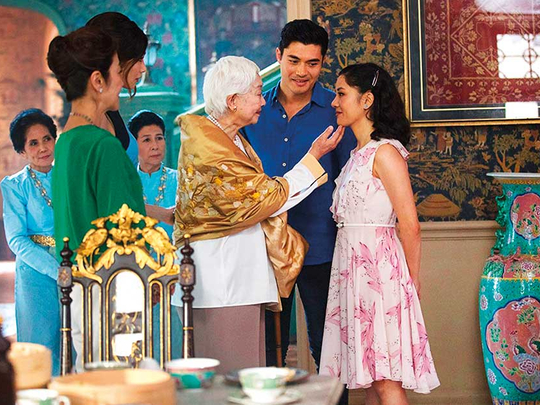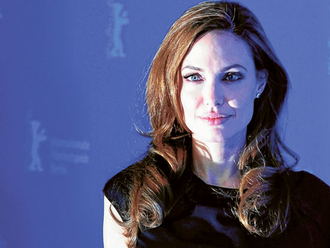
As Crazy Rich Asians continues its global domination in theatres with major studio backing and a main cast entirely of Asian descent, the reception around the movie is practically giddy.
A “cinematic Halley’s comet” is how the New York Times described the extraordinary casting of the romantic comedy based on Kevin Kwan’s novel of the same name. “The success of Crazy Rich Asians may change how Hollywood views what ethnicity a leading man or woman should be,” suggested The Washington Post.
The last non-martial-arts major Hollywood movie with a cast largely of East Asian descent was The Joy Luck Club. (So many qualifiers are required to make Crazy Rich Asians a first that it’s almost comical.) Released in 1993, Joy Luck was a weepy drama that followed Chinese-born mothers and their American-born daughters as they unpacked stacks of intergenerational baggage, including cruel Asian customs, matricide, arranged marriages, superstitions, curses and, of course, curses’ close cousin, dating white men. (Did we mention it’s now regarded as having introduced into pop culture its own stereotypes about Asian American families?)
But lost in the discussion is a film that was once seen as just as groundbreaking as Crazy Rich Asians.
It was Better Luck Tomorrow, a subversive 2002 teen drama that played like an Asian-American Kids, if that helps give you a taste of how depraved and bleak and devoid of adult supervision this high school movie was.
The ruckus around Crazy Rich Asians might stir up a feeling of deja vu for those who remember the indie Better Luck Tomorrow, whose cast included John Cho, who went on to star in another Hollywood movie with Asian-American leads: Harold & Kumar Go to White Castle. (Justin Lin, the director of Better Luck Tomorrow, went on to take the reins of the Fast and the Furious franchise and never looked back.)
Asian-American cast? Check. Roles that slyly check the litany of stereotypes that saddle people of Asian descent? Absolutely.
At its centre was Ben (Parry Shen), a California teen who, in the opening scenes, warms the bench as the basketball team’s lone, possibly token Asian-American player. Along with all the school’s other Asian kids, he obsesses over grades, SATs and extracurriculars, and has internalised the only thing that (supposedly) matters to Asian parents: getting into college.
But writer-director Lin and co-writer Ernesto Feronda set up the stereotypes only to knock them down like bowling pins over the course of Better Luck Tomorrow.
Ben and his friends have a few side hustles: They are enmeshed in a cheat-sheet ring, which leads them to more illicit enterprises. Soon enough, they’re drug dealer cool-guys who flirt with violence and guns as often as with girls.
“It’s literally a full-time job just making people believe who you’re supposed to be,” Ben intones over the action. Between his various illegal comings and goings, he frets, he can’t even start his homework till 1am. Meanwhile, he wipes at the white powder that’s settled just beneath his nose.
And in another scene: “So, what are you guys?” a white girl at one party wants to know as Ben’s friends tally up her cash and slip her their wares. “A club,” answers Ben’s cocaine-slinging compatriot, Virgil.
“Oh, like, a math club or something?” she responds.
Though Lin is reported to have struggled to find financing for his film, and Better Luck Tomorrow, like Kids, had a largely unknown cast, it emerged as “the Cinderella” of 2002’s Sundance festival, and was scooped up by MTV Films and marketed as “Tarantino-esque” before it opened in theatres the next year. MTV Films’ executive vice president told the Los Angeles Times that “a lot of executives who saw it were put off by what the movie was about, and that, in many ways, was what excited us about it.” It opened on 13 screens, but soon was playing on 400, and would earn $3.8 million domestically.
National and international attention soon followed. The film was alternately called racist and controversial for its depiction of Asian-American kids as criminal, and stereotype-busting for precisely the same reasons.
“This slick, knowing depiction of upper-class high school ennui is sure to be a hit with its target teen audience,” wrote The Post’s Ann Hornaday.
“Many Asians in the United States and Canada believe it will be the film that launches an Asian-American wave just as Spike Lee’s 1986 debut, She’s Gotta Have It, ushered in African-American cinema,” one writer suggested in Canada’s Globe and Mail.
A wave? It was more of a wipeout, and 15 years would pass before Crazy Rich Asians would create a stir.
But before Better Luck Tomorrow faded away, another victim of pop culture’s nonexistent institutional memory, it managed to garner one very prolific supporter, a critic who instinctively understood what the film was. At Sundance, as one critic stood up and asked, “Don’t you have a responsibility to paint a more positive and helpful portrait of your community?” the defender stood up and angrily offered this, quelling the uproar:
“What I find very offensive and condescending about your statement is nobody would say that to a bunch of white filmmakers. ‘How could you do this to your people?’ “ he said from the audience. “Asian-American characters have the right to be whoever the hell they want to be. They do not have to ‘represent’ their people.”
It was Roger Ebert, who would go on to name Better Luck Tomorrow one of his top films of 2003. And with that, the film was a success.












